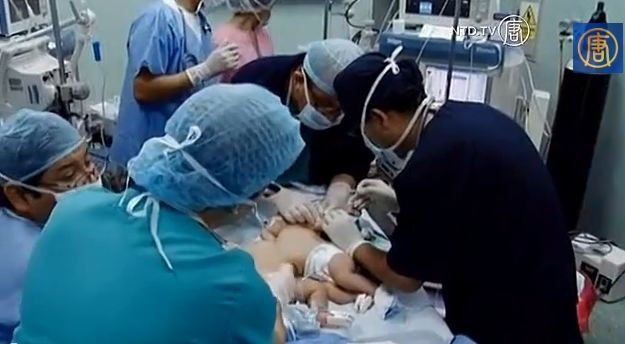
Two conjoined Peruvian twins, Shadya and Shandell, have successfully been separated after a surgery at a hospital in Lima.
The twins, who were born in Peru in February of this year, were joined at their abdomen and shared a liver. A surgery that required thirty doctors and nurses, and took over eight hours, split the girls' livers in two. The girls did not share any other vital organs and thus, will now be able to live independent lives.
"The good news is that even though the twins were joined at the liver they didn't share biliary tracts, which means that they had their own bio systems, that was already a plus," said a medical representative to ITN. "The next step was to prepare the time of separation, so that they could each have enough liver for their metabolic needs."
The girls are expected to be released from the hospital to their parents in the upcoming days and will remain under medical monitoring as they grow independently.
According to University of Maryland Medical Center, one in 200,000 births are conjoined twins and the survival rate of conjoined twins is anywhere from five percent to 25 percent. Surprisingly, about 70 percent of conjoined twins--which are genetically identical and develop from the same fertilized egg--are girls.
"In the case of conjoined twins, a woman only produces a single egg, which does not fully separate after fertilization," explains UMM. "The developing embryo starts to split into identical twins during the first few weeks after conception, but stops before the process is complete. The partially separated egg develops into a conjoined fetus."
What's more, there are twleve different types of conjoined twins in terms of classification depending on which part of the body the twins are joined at. The survival rates of twins that undergo surgery varies on a variety of other factors.
© 2025 Latin Times. All rights reserved. Do not reproduce without permission.





